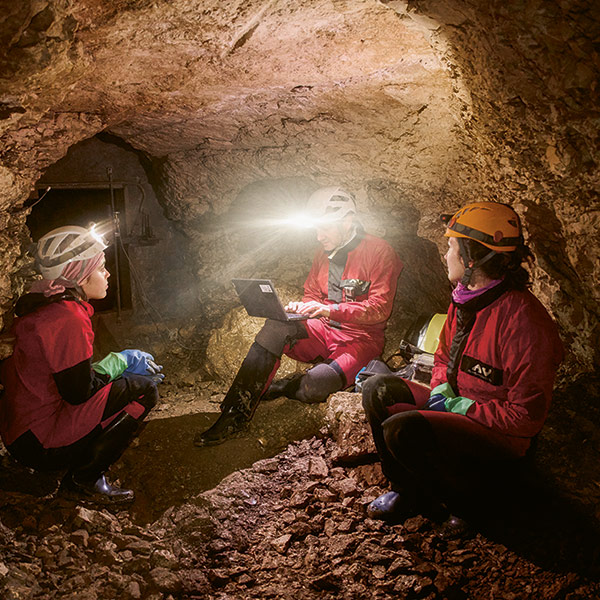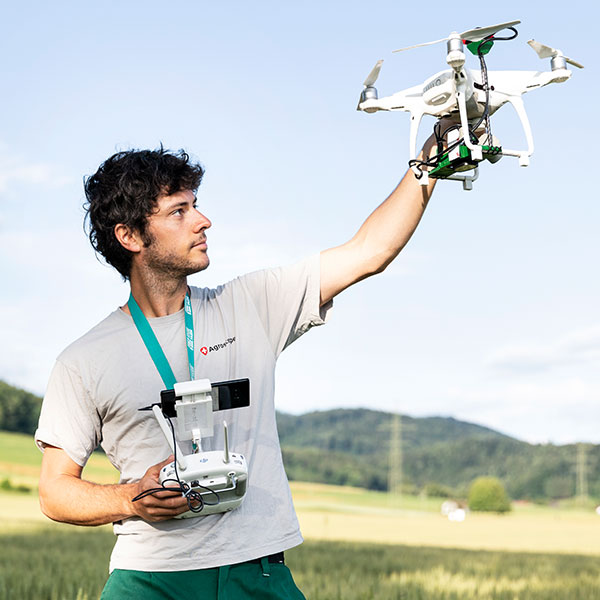Bacteria
Little helpers, big results
Microbes have long been used for refining foodstuffs – without anyone knowing about them. Today, they are experiencing a new heyday in technological applications. We look at five examples.
Yeast fungi ferment grain into alcohol, and the bacteria in lactic acid ferment vegetables and preserve them. We humans have known about these phenomena for thousands of years. But it’s not been long since we found out that living organisms are actually responsible for them. The development of the microscope made microbes visible for the first-ever time in the late 17th century. In 1856 Louis Pasteur described the process of alcoholic fermentation for the first time and was able to show that it makes numerous substances besides ethanol. He thereby opened up the possibility of targeting the production of different chemical substances through microbial processes.
One such method was exploited in industrial dimensions during the First World War. Glycerol was obtained in large quantities as an intermediate product in the fermentation of sugar by yeast, and was then used to make explosives. Later, the food and pharmaceutical industries began using microbes on a large scale, the latter in order to produce active ingredients. But researchers are constantly opening up new areas of application. For example, genetic engineering tools can be used today to endow bacteria with a wide variety of abilities. Once it became possible to patent such organisms in 1980, science was given an additional boost. Today, even more fields of application are being explored.
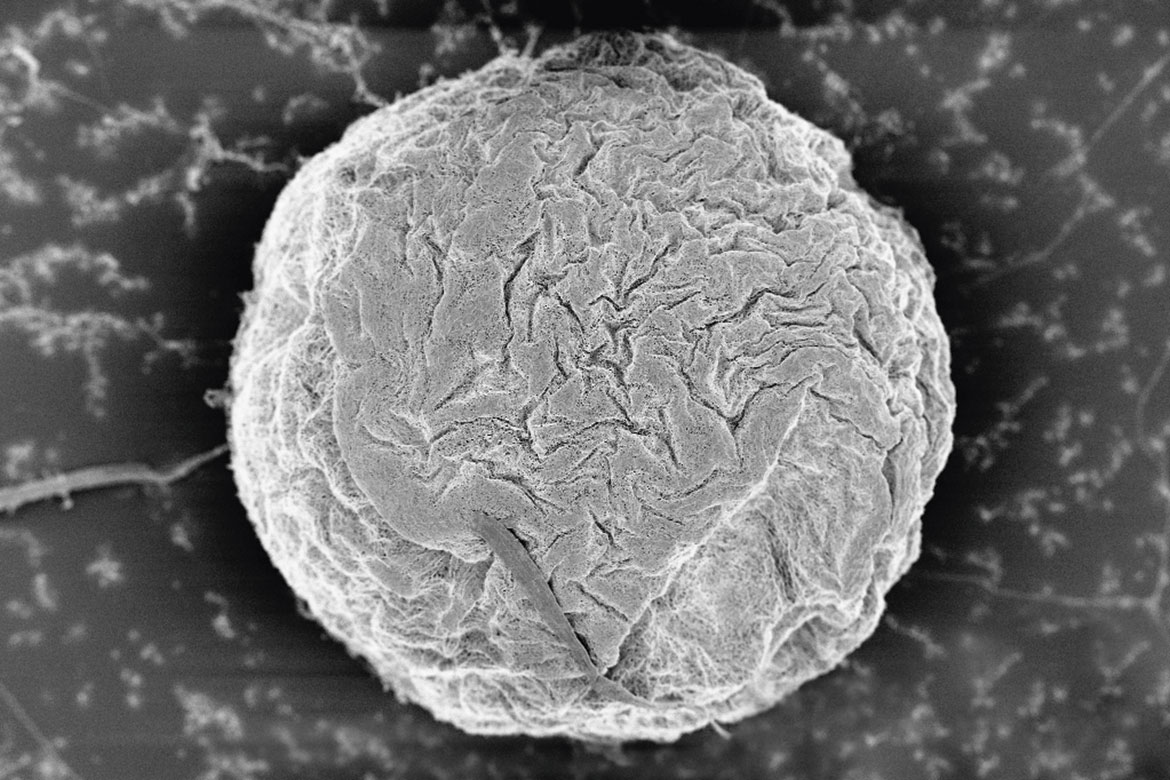
A microcapsule of bacterial cellulose, for medical applications. | Image: zVg
Mucus layers grown in shapes
Slime layers of bacteria can form on various types of surface. These so-called biofilms consist of both the microbes themselves and substances that they secrete. The bacterium Gluconacetobacter xylinus lives in a slime with a large cellulose content.
Together with his team of researchers at ETH Zurich, Peter Fischer is trying to make use of this. They are colonising G. xylinus specifically on three-dimensional moulds that become covered in cellulose when a biofilm forms. They have already succeeded in doing this on small droplets comprising an oil-water emulsion. “The challenge is to provide the right growth conditions for the bacteria to multiply and produce the cellulose that we want”, says Fischer.
Once this has happened, the resulting structure is washed out – in other words, it is freed from the bacteria themselves. What remains is a microcapsule of bacterial cellulose that can be filled with ingredients such as medicines. Synthetic polymers are currently employed to make these capsules, and they are used in cosmetics, medicine, agriculture and many other fields. But bacterial cellulose offers new material properties. Furthermore, the production and degradation of this material are environmentally friendly.
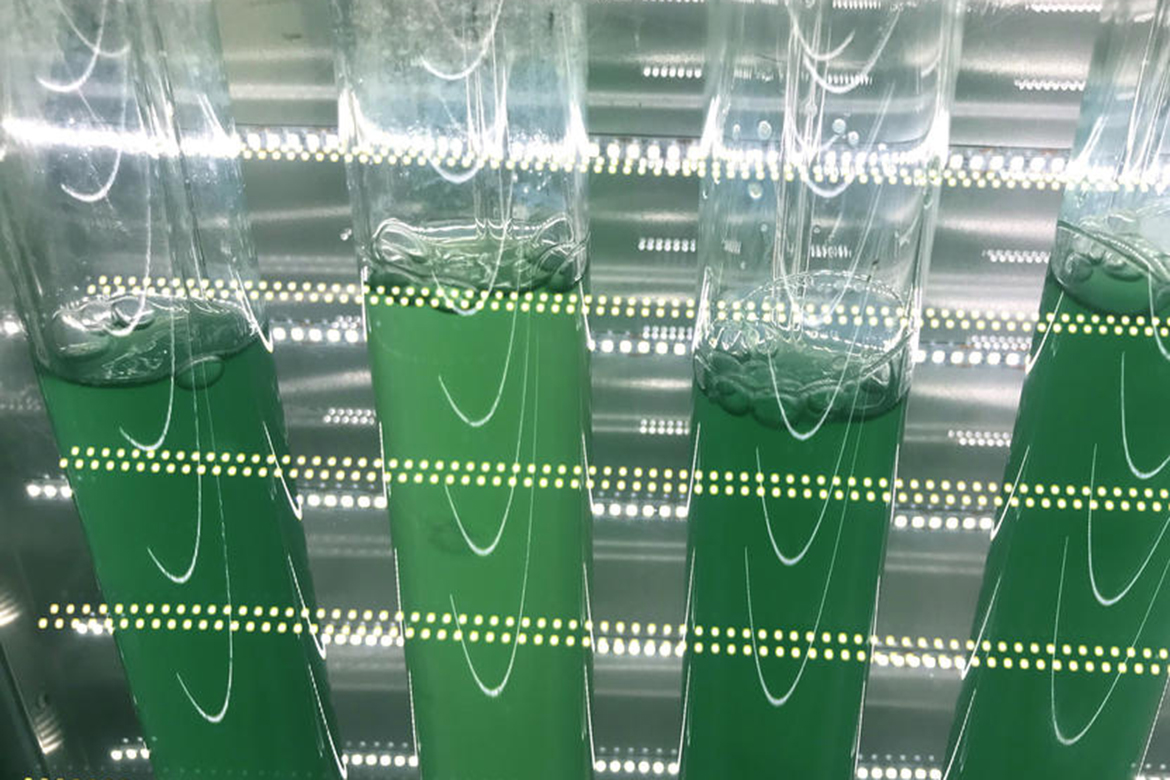
Cyanobacteria conduct photosynthesis. | Image: zVg
Genetically modified solar cells
Plants and many species of bacteria use sunlight for photosynthesis, splitting water molecules into oxygen and hydrogen. Humans have developed processes that use synthetic materials to mimic these processes. This is because producing hydrogen is an ideal way of using the immense potential of solar energy: It can be stored, and later burned to generate energy.
To this end, researchers at EPFL want to develop solar cells that don’t just imitate natural processes, but actually utilise bacteria to conduct photosynthesis. “This would have a number of advantages”, says Ardemis Boghossian, who is leading the project. “Solar cells of this kind would be relatively cheap, and they could be very robust. Since they would be living systems, they could absorb a different amount of light depending on the weather. They could also repair themselves in case of light damage, and even reproduce”.
However, the efficiency of such systems has so far been low. For one thing, the insulating outer shell of the bacteria limits the transfer of energy to an external electric circuit. Boghossian and her team are therefore modifying the genetic material of various bacterial strains in hopes of getting them to develop a metabolism that favours the flow of electricity.
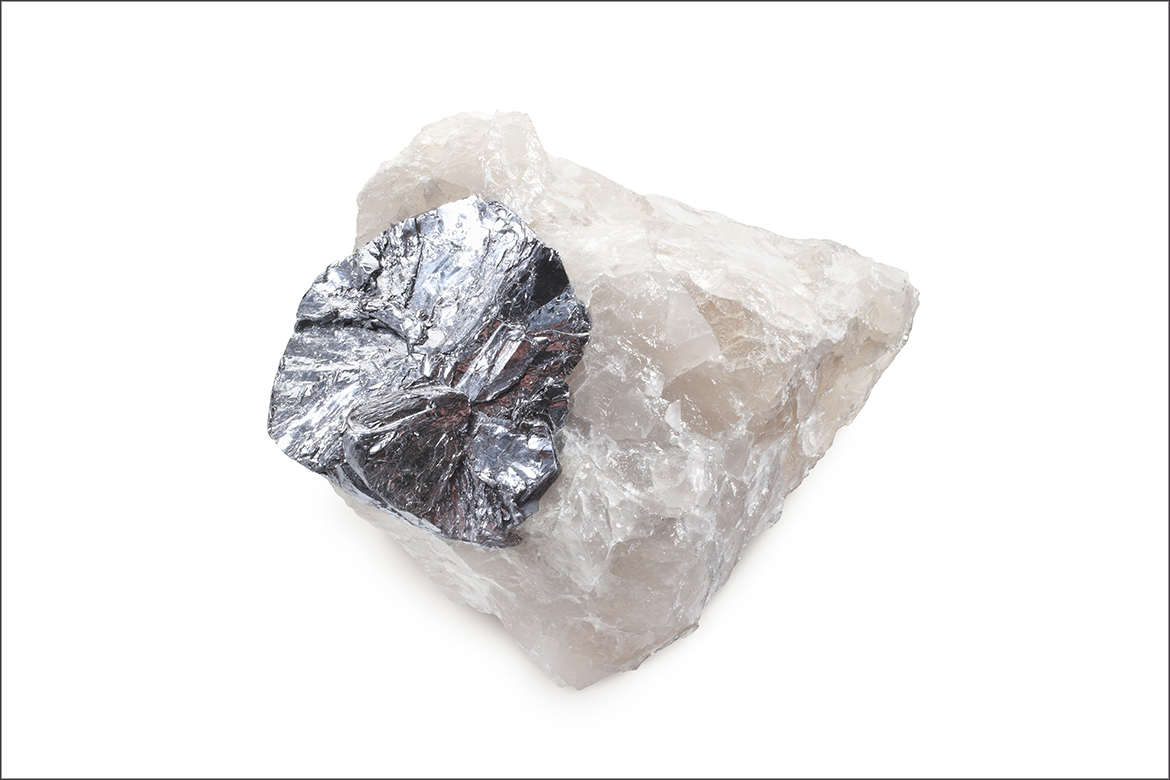
Molybdenum sulphide nanoparticles are expensive. | Image: Science Photo Library
Metal instead of oxygen can create superconductors
When the bacterium Shewanella oneidensis breathes air, it transfers electrons to oxygen atoms. But it can also live in oxygen-free environments. Then it breathes metallic compounds instead of oxygen, and attaches electrons to them. Researchers at the Rensselaer Polytechnic Institute in New York have made S. oneidensis breathe various metal compounds in their experiments, thereby enriching them with electrons. After several tests, they found a starting material that the bacterium can turn into nanoparticles of molybdenum sulphide.
This material is currently in great demand among researchers because it has special electronic, magnetic and superconducting properties. Just like with graphene, these occur due to its unusual, two-dimensional structure. Last summer, for example, researchers in Basel succeeded in using molybdenum sulphide to create a semiconductor with superconducting contacts as thin as an atom. Up to now, the synthetic production of this material has been costly, not least because the process requires pressures of up to ten atmospheres. But bacterial production could help us to obtain molybdenum sulphide much more easily in future.

The historic warship Vasa is slowly decaying. | Image: Walter Bibikow/mauritius images
Conserving archaeological finds
patrimoine, University of Neuchâtel
Sunken shipwrecks are often astonishingly well preserved – until they are salvaged. During the years in which they lie in the ocean, their iron reacts with sulphur to form iron sulphides that are deposited in their wooden structures. If these sulphides come into contact with oxygen, chemical reactions are triggered that severely damage the wood. Technologies designed to prevent these processes have not always been successful.
This is why Édith Joseph and her team from the University of Neuchâtel and the University of Applied Sciences and Arts Western Switzerland are taking a new approach. Their idea is to treat the wood while it is still wet, using bacteria whose metabolism breaks down iron and sulphur compounds. “Our goal is to remove the pollutants with the help of the bacteria or their metabolic products, but without subjecting the historical objects to any other damage”, says Joseph.
Restorers are in fact already using a treatment developed by Joseph that protects metal sculptures from corrosion using the metabolism of fungi. She and her researchers are still testing their new treatments for wood, using wood samples that they submerged in Lake Biel four years ago. The results so far are promising. They could prevent future finds from suffering the fate of the famous 17th-century warship Vasa, which is slowly but surely decaying in its museum in Stockholm.
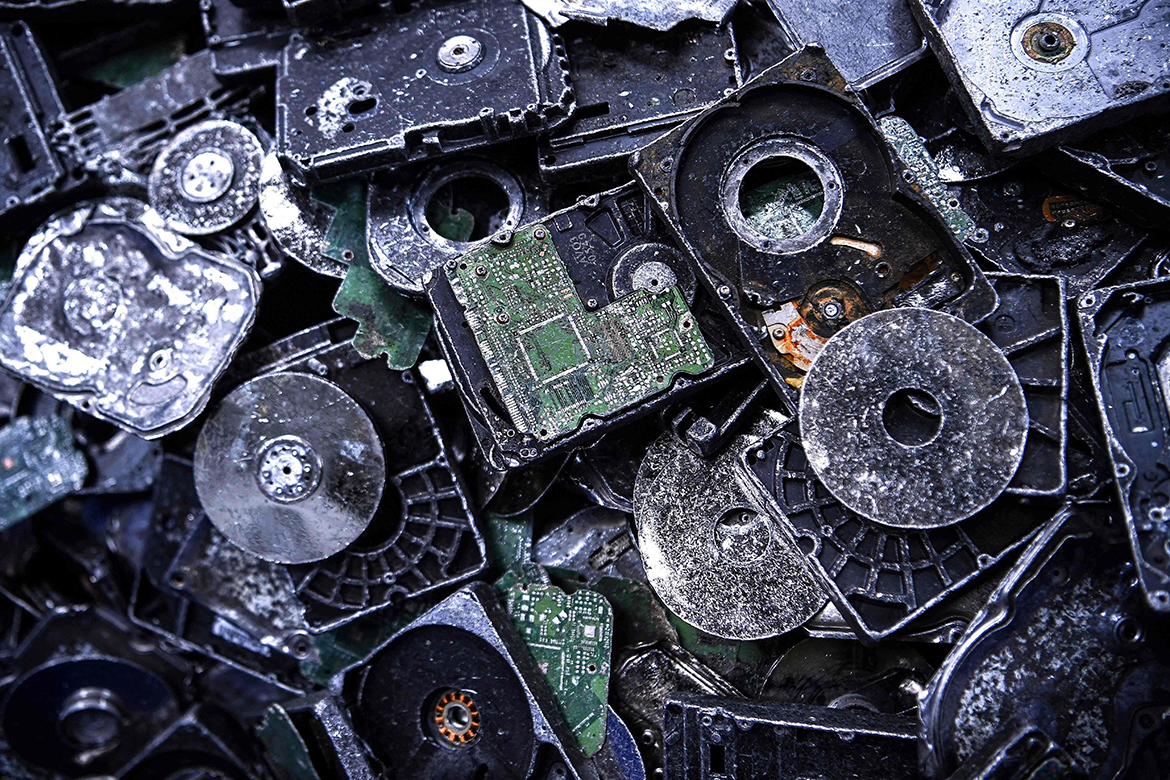
Electronic waste can yield valuable raw materials. | Image: Christophe Archambault/AFP
Critical raw materials from electronic waste
According to the Global E-Waste Monitor, more than 53 million tonnes of e-waste were generated across the world in 2019. But only a tiny proportion of this is being recycled. This is despite the fact that this waste contains considerable amounts of so-called critical raw materials, such as rare earths, for which the supply situation could become difficult in the foreseeable future. But the yield from recycling is low, and the processes involved are energy-intensive and dangerous to the environment. Now Pierre Rossi and other researchers at EPFL want to develop a simpler, more efficient recycling technology, using bacteria. This metabolic process involves converting metals and can transform the coveted raw materials into a soluble state. It is called ‘bioleaching’, and is already used in the mining industry all over the world.
“The problem is that these special bioleaching processes are not suitable for recycling e-waste”, says Rossi. “They are sensitive to high metal concentrations and to the organic substances that are released from old electronic equipment”. His team is therefore developing an application using bacterial species that can thrive in e-waste. Experiments in the lab have already succeeded in dissolving considerable amounts of cobalt, lithium and rare earth elements such as indium and neodymium from old mobile phones and circuit boards.

